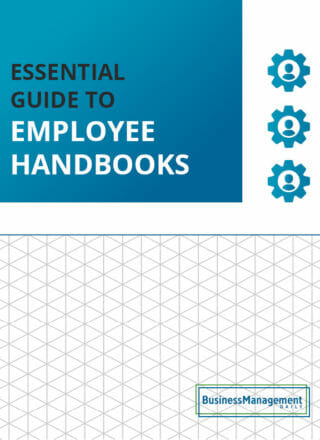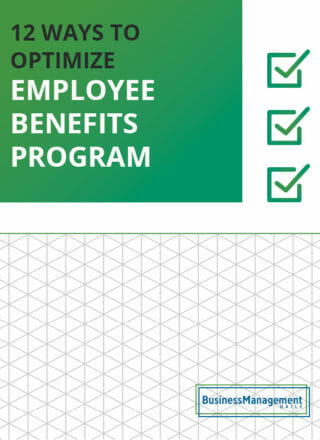What’s a merit increase, and should your business use them?
The role of merit increases in employee retention
Retaining top performers has become a serious challenge for recruiters in recent years.
This mass exodus of 50.6 million US workers in 2022, particularly among young men, has significantly impacted the job market and heightened the challenge of retaining top performers.
As such, employers must do everything they can to attract and retain high-performing employees, and issuing regular merit increases is one of the best ways to do so.
A merit increase or merit raise refers to a pay increase based on an employee’s performance.
It’s not just a bonus, either.
Merit pay is a permanent increase to an employee’s base salary, and it tends to accompany regular performance reviews.
If an employee meets or exceeds your expectations that year, giving them a 2% to 3% merit increase is considered standard fare. Some companies take this philosophy further and deliver merit raises ranging from 5% to 10% (or even 15% for truly exceptional performances).
Merit pay increases are great ways to reward your top talent and encourage loyalty, which will improve your retention rates.
However, with a carefully structured merit increase policy that is transparent and fair, you can avoid isolating or inspiring jealousy among employees, thereby promoting a positive work environment and improving retention rates.
It’s important to note that the decision to issue merit increases may not always align with the goals of every organization, especially those that are not profit-driven, such as NGOs and government organizations. In such cases, alternative strategies for employee retention should be considered.
There’s quite a bit of unpacking here, so read on to learn everything you need to know about merit increases, including whether they’re a good call for your organization.
What is a merit increase?
A pay raise must be performance-based and provide a permanent increase to a worker’s base salary to qualify as a merit increase.
Most organizations have merit increase programs that provide regular salary increases based on employee performance.
During a quarterly or annual performance evaluation, an employee’s manager reviews their goals, quotas, and other important metrics. If they meet all their performance metrics (or exceed them), they’ll receive a merit increase.
Conversely, no merit increase is issued if their job performance has been less than stellar.
For this reason, merit increases serve as powerful financial incentives for your employees to work harder to meet their performance expectations, boosting their morale and commitment to the company.
When done properly, merit increases can significantly contribute to your company’s success, fostering a culture of high performance and dedication among your employees.
When handled poorly, a merit pay policy can foster feelings of jealousy and favoritism, negatively affecting employee morale and potentially leading to increased turnover.
Why is that?
It’s because merit increases involve a lot of variance. In other words, not every employee will receive the same size of an increase to their salary.
Companies provide merit raises from their merit pool, which contains the amount of money available for raises that year. The average merit increase might be 3% for most employees.
However, it bumps up to 4% for top-performing employees. These employees exceed all their performance goals. Alternatively, they earn more revenue for the company through boosted sales.
Lower performers, who still met expectations but failed to exceed their goals, may only receive 2%.
Due to the variance involved, transparency on the employer’s part plays a critical role in the process.
You shouldn’t have much trouble if your people know that your annual raises are based on merit and not favoritism.
The difference between merit raises and other financial rewards
It’s extremely common for both employers and employees to confuse merit raises with other types of workplace financial rewards.
For instance, some assume that annual raises for all employees count as merit increases, which isn’t true.
The two qualifying factors for a financial reward to be considered a merit increase are that it’s based on work performance and is a permanent increase to an employee’s salary.
Here’s a look at other types of financial rewards and how they differ from merit pay.
Regular pay raises
Not every increase to an employee’s annual salary qualifies as a merit increase.
Some organizations deliver annual pay raises to all employees and aren’t tied to performance.
Others choose to give out pay raises due to:
-
Contractual obligations
-
Total time spent at an organization
-
Adding new responsibilities to an existing role (like merging two roles together)
-
Reliability
-
Acquiring new skills
None of these reasons qualify as a merit increase since they aren’t performance-based.
However, that doesn’t mean these types of raises aren’t effective in boosting employee retention.
If you give raises to employees who stay at the company for a long time, word will get out, and you’ll easily attract talent.
As long as you have the budget capacity to administer raises, you should consider handing them out even if they aren’t merit-based.
Bonuses
As stated before, a bonus is not a permanent increase to an employee’s salary. Instead, it’s a one-time sum used to reward employees for meeting company objectives.
Employers confuse bonuses with merit increases because both are based on work performance.
However, the difference lies in the way the compensation is delivered.
A bonus doesn’t permanently add to an employee’s current salary, but a merit increase does.
Whereas a merit raise permanently boosts an employee’s pay by 3% or 5%, a bonus is a large lump sum that’s delivered all at once.
Reasons companies deliver bonuses include:
-
Meeting or exceeding company goals
-
Reaching milestones for longevity (such as being with a company for 25 years)
-
Consistently putting in hard work no matter what
-
Adding to the company’s bottom line (like by exceeding sales quotas)
-
Meeting or exceeding performance goals during an evaluation
As you can see, there is some overlap between bonuses and merit increases, which causes confusion.
Some companies may hand out bonuses during annual performance reviews instead of merit increases.
Remember that the key difference is that a merit increase is always a permanent boost to an employee’s salary, not a one-time lump sum.
Once again, bonuses are another great way to encourage better individual performance, so if you have the capability, you should use them in tandem with merit increases.
Evidence also shows that quarterly bonuses yield higher productivity than annual bonuses, which is something to keep in mind.
Cost of living adjustments (COLA)
Many organizations provide cost of living adjustments to employees to keep up with rising inflation.
As the value of the US dollar continues to decrease, an employee’s salary loses its purchasing power.
COLA raises are an attempt to even things out to maintain an employee’s intended compensation.
A COLA raise is similar to a merit increase in that it’s a permanent increase to an employee’s salary. However, it’s different because COLA pay increases aren’t based on an employee’s performance or hard work.
Instead, these types of pay raises are given across the board to ensure proper compensation and competitive salaries.
Cost of living adjustments is a core aspect of compensation planning, as failing to keep up with inflation will cause the following negative side effects:
-
An underpaid workforce leads to high turnover (59% of employees claim to have quit a job due to poor compensation)
-
Failure to provide competitive compensation will generate a negative reputation for your organization
-
Improper compensation will cause a resentful workforce that’s disengaged and unproductive
That’s why it’s crucial to compensate your team members with fair salaries that keep up with inflation.
Promotions
On paper, a promotion is deceptively similar to a merit raise since it is both a permanent increase to a worker’s salary and performance-based.
The difference is that a promotion involves elevating the employee into a brand-new role with its own responsibilities and required skills.
Merit increases, on the other hand, apply to the same role. In other words, the employee makes more money for doing the same job with a merit increase.
Promotions are still a great way to improve retention (although this is diminishing, as evidence shows 29% of employees leave their position within one month of being promoted), especially if you promote from within.
A LinkedIn study found that the average retention rate jumps from 45% to 70% for employees who received a promotion within their first three years at a company.
When do merit increases make sense?
There are certain industries and positions that benefit from merit increases more than others.
In fact, merit raises aren’t even possible for some organizations lacking the budget to hand out pay increases.
As stated previously, NGOs, nonprofits, and government organizations often lack the funds to provide merit raises, and they’re certainly not alone. Small businesses can have the same issue as businesses with low-profit margins (like discount retail stores, grocery stores, gas stations, and convenience stores).
Here’s a look at the top scenarios where it makes sense to provide merit increases.
When your industry or department calls for them
Since merit increases are financial incentives for employees to work as hard as they can, they make the most sense for:
-
E-commerce stores
-
Sales departments
-
Pharmaceutical companies
-
Marketing departments
-
Recruiters and HR leaders
These are by no means the only areas where merit increases happen, but they are the most common (and typically yield the largest percentages).
Even if an employee’s work doesn’t directly add to your bottom line, you should still reward outstanding performances with merit raises.
For example, the team member handles your accounts payable. They never miss a payment. They also put in hard work every day. Rewarding them with a merit increase will help you retain them long term.
If you fail to recognize their contributions, don’t be surprised if they look for better opportunities elsewhere.
That’s why rewarding employees in all roles is crucial if you have the capability.
To retain top-performers
These are the employees who are first in line for merit increases since their work output is so strong.
They’re the salespeople who exceed quotas, the marketers who develop genius new promotions, and the recruiters who keep bringing in top talent – to name a few.
Once again, if you don’t recognize and reward their rockstar performances, it won’t take long before they find a better opportunity somewhere else.
Yet, it’s important to avoid instances of favoritism, so you should be as unbiased as possible when analyzing your employees’ performances.
Just because a salesperson outperformed three years in a row doesn’t necessarily mean they’ll maintain their momentum. Also, other employees will catch on if you reward an employee who didn’t truly earn it.
For this reason, you must pay close attention to your performance management metrics. Ensure that you’re rewarding your top performers with an appropriate merit increase based on their performance and not their popularity or past successes.
To encourage steady improvers
Merit pay is also great for encouraging your steady improvers to stick with it and continue to evolve.
These are your employees who aren’t topping the charts yet but are well on their way. They could be new hires finally getting the hang of things or senior employees who have finally had an epiphany.
Regardless, it’s essential to encourage their improvement by rewarding them with merit increases, bonuses, and promotions.
Tips for implementing merit increases
If you plan on using merit increases at your organization, you shouldn’t keep them a secret.
Instead, develop a merit increase policy for your employee handbook. Train your managers to inform their team members of your policy to ensure everyone knows how they work.
After all, a merit raise can’t work as a financial incentive for an employee if they don’t know they exist.
Here are a few tips for implementing merit raises:
-
Be transparent. Every employee should understand your company’s expectations and the rewards they’ll receive for meeting goals.
-
Stay consistent. Your merit increase policy will fail if it’s inconsistent. If an employee receives a merit raise for an outstanding performance one year but not the next, it will lead to confusion and resentment.
-
Align merit raises with company goals. You should determine the goals and behaviors you want to reward the most before writing out your policy. In particular, ensure that each merit increase aligns with one of your organizational goals.
Concluding thoughts: Using merit increases
Financial rewards are crucial for maintaining healthy retention rates and a productive workforce.
If your top performers don’t receive rewards like bonuses, COLA raises, and merit increases, they’ll likely feel underappreciated and look for other opportunities.
Merit raises also serve as financial incentives. They encourage your employees to work harder. Furthermore, merit raises help them outperform the competition. This is a big reason why they are so effective.
More resources:
Job enrichment: The key to unlocking employee motivation
Micromanagement: The silent killer of workplace productivity
6 ways to boost employee engagement with performance discussions
Want more insights like these? Visit Matthew Scherer’s author page to explore his other articles and expertise in business management.






